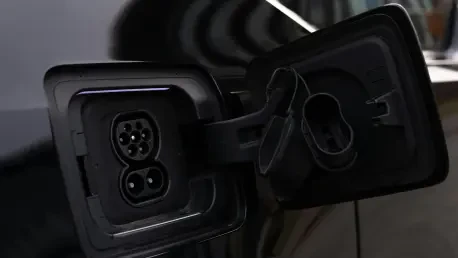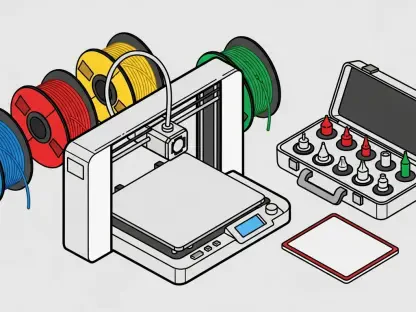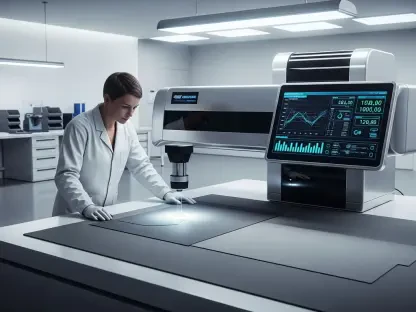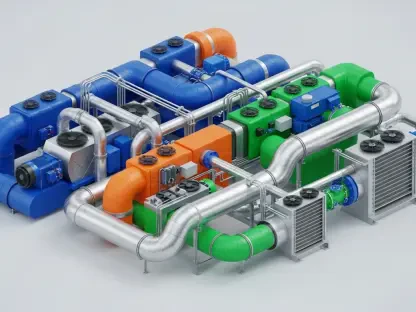General Motors (GM), a cornerstone of the American automotive landscape, finds itself at a critical juncture in the electric vehicle (EV) market as federal tax credits are poised to expire on September 30, 2025, creating uncertainty for its future growth. With a remarkable sales performance this year, GM has emerged as a formidable force, trailing only Tesla in U.S. EV market share. However, the impending loss of $7,500 per vehicle incentives casts a shadow over this success, raising pressing questions about whether the company can sustain its growth without government support. Beyond this policy shift, GM grapples with intense competition from global players and the urgent need to innovate in a rapidly evolving industry. This situation underscores a broader challenge for automakers: transitioning from subsidy-driven demand to a market fueled by genuine consumer interest and cost-competitive offerings. As GM navigates these turbulent waters, its strategies and adaptability will shape its future in the electrification era.
Surging Sales Amid Subsidy Support
In the second quarter of 2025, GM reported an impressive 46,300 EV units sold, a figure that more than doubled its performance from the prior year. This surge has solidified GM’s standing as a top contender in the U.S. market, driven largely by federal tax credits that lower the cost barrier for consumers. Models such as the Chevrolet Equinox EV have resonated with budget-conscious buyers, while Cadillac’s electric offerings have captured a significant 25% of the brand’s sales, highlighting a growing appetite for luxury EVs. These incentives have not only spurred purchases but also enabled GM to manage inventory effectively, creating a robust foundation for market presence. Yet, this success is intricately tied to external financial support, prompting concerns about the depth of organic demand for GM’s electric lineup as policy changes loom on the horizon.
While the numbers paint a picture of triumph, the reliance on tax credits reveals a potential vulnerability in GM’s current strategy. The affordability factor has been a key driver, particularly for middle-income households who might otherwise hesitate to invest in EVs due to higher upfront costs compared to traditional vehicles. GM’s ability to capitalize on this incentive has allowed rapid market penetration, especially in competitive segments where price sensitivity plays a critical role. However, this growth trajectory also masks underlying challenges, such as the need to build brand loyalty and trust in EV technology without the cushion of subsidies. As the industry braces for a shift, GM must find ways to maintain this momentum through enhanced value propositions and targeted marketing efforts to ensure customers remain committed to its electric vision.
Tax Credit Expiration: A Turning Point
The scheduled expiration of federal tax credits in September 2025 presents a formidable obstacle for GM, with analysts predicting a potential 27% decline in EV sales once these subsidies are removed. This forecast underscores the extent to which government incentives have shaped consumer behavior, often tipping the scales for buyers weighing the cost of electric versus conventional vehicles. GM’s leadership, including CEO Mary Barra, has acknowledged this as a critical moment to assess genuine market demand in 2026, free from artificial boosts. The challenge lies in recalibrating strategies to preserve sales volumes, especially as the absence of financial incentives could deter price-sensitive customers. This policy shift will test the resilience of GM’s current market position and its ability to adapt under pressure.
Beyond immediate sales impacts, the end of tax credits signals a broader transition for the EV sector toward self-sustained growth. For GM, this means an urgent focus on reducing production costs to make EVs more accessible without external support. Efforts to streamline manufacturing processes and invest in affordable battery technologies are underway, but the timeline for tangible results remains tight. Additionally, consumer education about the long-term benefits of EV ownership, such as lower maintenance and fuel costs, could help mitigate the sticker shock post-subsidy. The coming months will reveal whether GM can pivot effectively, balancing cost-cutting measures with quality and innovation to retain its competitive edge in a market poised for normalization after years of policy-driven expansion.
Rising Global Competition
GM faces mounting pressure from international competitors, particularly Chinese automakers who are rapidly expanding their footprint in North America. Companies like BYD and Nio bring to the table not only lower production costs but also innovative features such as battery-swapping technology, which enhances user convenience. By establishing manufacturing bases in Mexico to circumvent U.S. tariffs, these firms are strategically positioned to offer advanced EVs at competitive prices, directly challenging GM in the mid-to-high-end segments. This global rivalry intensifies the need for GM to differentiate its products through superior design, performance, and localized appeal, lest it risk losing ground in a market it has worked hard to dominate.
The competitive landscape is further complicated by the technological advancements and aggressive pricing strategies of these international players. GM must contend with the reality that cost advantages held by Chinese manufacturers could sway price-conscious consumers, particularly as subsidies wane. To counter this, GM needs to accelerate its own technological innovations and explore strategic partnerships that can lower costs without compromising quality. Moreover, understanding regional consumer preferences and tailoring offerings accordingly could provide a buffer against foreign competition. As the battle for market share heats up, GM’s response to these global dynamics will be crucial in maintaining its relevance and influence in the evolving EV arena.
Balancing Production Flexibility
In response to market uncertainties, GM has demonstrated strategic foresight by investing $4 billion to upgrade manufacturing facilities across states like Michigan, Kansas, and Tennessee. This modernization effort supports a dual production model, enabling the company to manufacture both EVs and internal combustion engine vehicles based on consumer demand. Such flexibility is particularly vital in profitable segments like full-size SUVs and trucks, where preferences can shift unpredictably. While this approach provides a safety net amid policy and market fluctuations, it also reflects a pragmatic acknowledgment that a full transition to electric may not align with current realities, as evidenced by the delay of GM’s all-electric goal to beyond 2035.
This adaptability, while a strength, also highlights the complexities of navigating a transitional industry. GM’s investment in versatile production capabilities allows it to hedge against risks associated with EV adoption rates, especially in a post-subsidy environment where demand patterns are unclear. However, maintaining dual production lines requires significant resources and could strain operational efficiency if not managed carefully. The focus on modernization also aims to improve manufacturing scalability, ensuring that GM can ramp up EV output if demand rebounds or pivot to traditional vehicles if needed. This balancing act will be a defining factor in how well GM weathers the upcoming challenges, positioning it to respond dynamically to whatever the market demands in the near future.
Innovating for a Sustainable Future
Looking toward long-term viability, GM is channeling resources into innovation, with investments in lightweight materials, aerodynamic designs, and standardized components to enhance efficiency. A notable partnership with LG to develop cost-effective battery cells, set to commence in 2027, promises to lower EV production costs significantly. These initiatives are critical for making electric vehicles more competitive in price and performance, especially as financial incentives disappear. However, the road ahead is not without obstacles, as GM must also address consumer expectations for cutting-edge technology and seamless integration of EVs into daily life, ensuring that innovation translates into tangible benefits for buyers.
Sustainability remains a pressing concern alongside technological advancement, with unresolved issues like battery recycling and ethical sourcing of raw materials posing potential risks. These challenges could affect not only regulatory compliance but also public perception of GM’s commitment to environmental responsibility. As the U.S. EV market shows signs of a slowdown and China continues to lead in global adoption rates, GM must navigate a complex international landscape to secure its position. Tackling these sustainability hurdles through transparent practices and robust partnerships will be essential. The emphasis on long-term solutions reflects an understanding that enduring success in the EV space demands more than sales numbers—it requires a holistic approach to industry and environmental challenges.
Path Forward After Policy Shifts
Reflecting on the journey so far, GM has carved out a strong foothold in the U.S. EV market by leveraging federal incentives to drive unprecedented sales growth. The company has showcased adaptability through diversified production and has begun laying the groundwork for innovation to address future needs. Yet, the expiration of tax credits has introduced a stark reality check, revealing the fragility of subsidy-dependent demand. Global competition has also emerged as a formidable force, with international players challenging GM’s market share through cost and technology advantages. These dynamics have set the stage for a defining period in GM’s electrification efforts.
Moving ahead, GM must prioritize actionable strategies to sustain its momentum in the aftermath of policy changes. Accelerating cost reduction through efficient manufacturing and battery advancements should be at the forefront, alongside efforts to educate consumers on the long-term value of EVs. Strengthening domestic production while countering global competitors with tailored innovations will also be key. Additionally, addressing sustainability concerns transparently can bolster trust and compliance. As the industry evolves, GM’s ability to anticipate market shifts and invest in scalable solutions will determine whether it maintains its leadership or cedes ground in the electric future.









